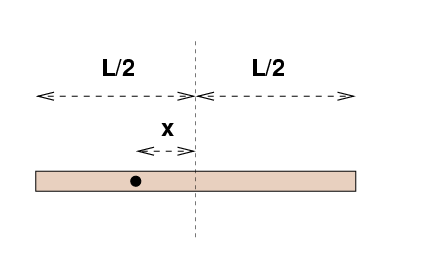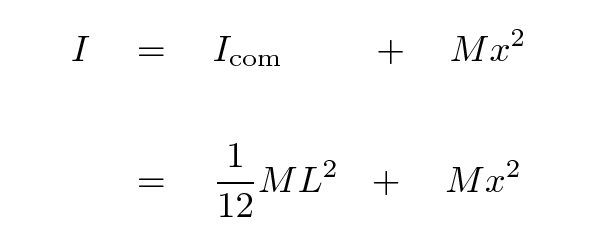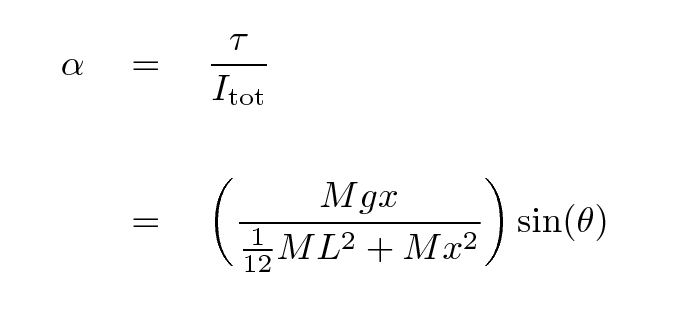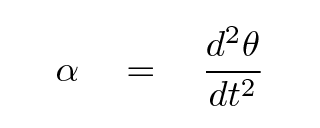
 Copyright © Michael Richmond.
This work is licensed under a Creative Commons License.
Copyright © Michael Richmond.
This work is licensed under a Creative Commons License.
Remember this scenario from last week? We drilled a hole a distance x from the center of a meterstick,

suspended the meterstick from a pin through this hole, and then nudged the meterstick so that it rotated around the pin.

The meterstick has a mass M and length L (which should be 1 meter, of course). What's the moment of inertia of the meterstick around this hole?
Right.

Okay, now, if we let the meterstick hang straight down for a moment, and then displace it by a small angle θ as shown, gravity will exert a torque on the stick. The magnitude of the torque will be

Q: What's the direction of the displacement θ? Q: What's the direction of the torque τ?
Okay, so we know the torque and the moment of inertia. When we release the meterstick, it will start to rotate. How large will the angular acceleration be?

Q: What's the direction of the angular acceleration α?
Now, as we saw last week, it turns out that if the angle θ is small -- say, 10 degrees or 15 degrees, then expressed in radians

Putting all this together, we can now say that the meterstick will accelerate like so:

Q: Hey! Isn't the angular acceleration related
to the angular displacement?
Why, yes, it is. In fact, it's the second derivative of angular displacement with respect to time,

So, putting everything together, this means that the motion of the meterstick -- as long as the angular displacements are small -- will follow the differential equation

Q: Can you write an equation which shows how
the angular displacement θ
will change with time?
Q: Suppose that the offset between the
center of the meterstick and the hole is
x = 0.2 m.
What is the equation now, with numbers?
Q: What will the period of the meterstick be?
 Copyright © Michael Richmond.
This work is licensed under a Creative Commons License.
Copyright © Michael Richmond.
This work is licensed under a Creative Commons License.